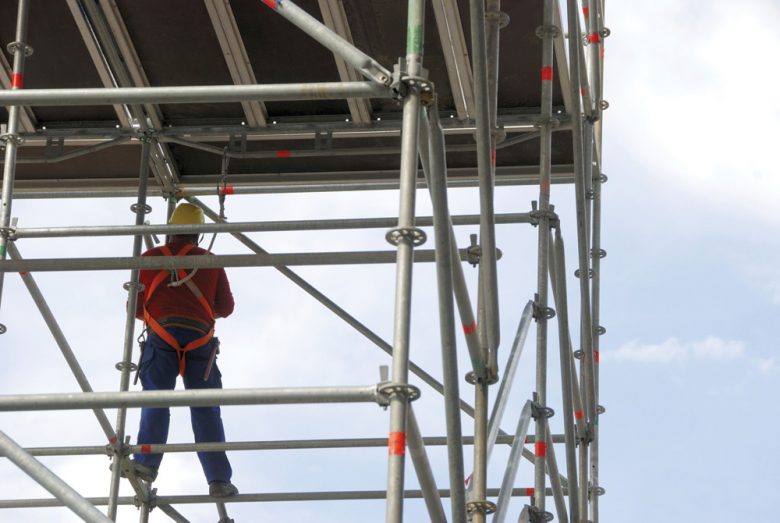Construction fatalities are on the rise, and nearly 40 percent of those are caused by falls from heights. Unsurprisingly, fall protection is regularly one of the top 10 most frequently cited violations, which is disconcerting because safety equipment and training are not only easily available but also legally required. These deaths are preventable.
Chris Ross addresses this subject in his article for the Summer 2016 issue of the Alaska Contractor. Chris is a safety professional with 30 years of experience, and a frequent lecturer, presenter and keynote speaker for audiences throughout the United States and Canada. Drawing on his extensive knowledge and experience, he hopes to help organizations enhance and change their culture. In this article, he points to OSHA’s three-point approach to protecting workers: plan, provide and train:
In the planning stage, several activities should occur, beginning with a risk assessment. A good assessment will reveal the types of hazards that workers may be exposed to. (…) The planning phase is also an excellent time to review your existing program.
Provide the right system components and equipment for the job. (…) Be sure that all elements of the personal fall arrest systems (PFAS) are designed to work together, that they are correctly sized to each worker and regularly inspected (and the inspection documented).
The final step of the process is to train all workers to use the system components safety. Training is required in hazard recognition, safe use and care of ladders, scaffolds, fall protection systems, rescue and equipment they will use. Workers also need to know about specific regulatory requirements, company rules, policies and procedures.
As the article notes, these three points are a stepping stone to an employee-focused safety program. For example, planning isn’t going to help you achieve the best possible results if it’s done without self-reflection and employee engagement. Not only do you need to consider all aspects of safety and review your current fall protection procedures, but you should also involve workers in this process. After all, they have firsthand knowledge of what works and what doesn’t for them, and soliciting employee feedback will encourage them to share concerns or ideas you might not otherwise consider.
By the same token, training can be approached from many angles and not all of them are created equal. Developing an engaging, interesting program is the first step to achieving better safety results. The key is to include employees and draw them in, improving their information retention and overall level of engagement.
The more hands-on and personal your training, the more effective it will be. For example, storytelling is one way of making training more engaging and relatable. The article describes other methods of engaging employees in safety, and there are also many safety-focused resources available to help you create more enjoyable and personable training sessions.
Chris also discusses the impact that management’s involvement in safety training can have on the use of fall protection:
Your training and education efforts should also display a high level of manager and supervisor commitment to the program. Having senior leaders in attendance and participating is one way to show support for the process. And because fall protection is such a big issue, it bears repeating and discussing on a regular basis, not just once per year.
Management should lead by example. If company leaders show no interest in the safety program, employees will perceive it as a lack of concern for their safety. Training becomes just a legal requirement that is provided by their superiors not our of care but because they’re expected to do it. A small change in perception can do a lot of good, or a lot of harm—and often all it takes to improve employee buy-in for safety is for managers to actively participate in training.
Chris also points out the importance of regular program assessment. You need to seek improvement potential, constantly look for new ways of making the program better and make sure it’s a “regular part of your business, not an event relegated to the “safety guy or gal” on an annual basis.”
Adopting a mindset of constant learning will ensure that you are always aware of industry updates, best practices and new equipment that could improve your workers’ safety, especially when it comes to fall protection and construction fatalities. Because compliance is not enough. As Chris puts it, “Every one of those (…) fall-related fatalities could have been prevented. Are you doing your part?”
To read the article in full, click here.

